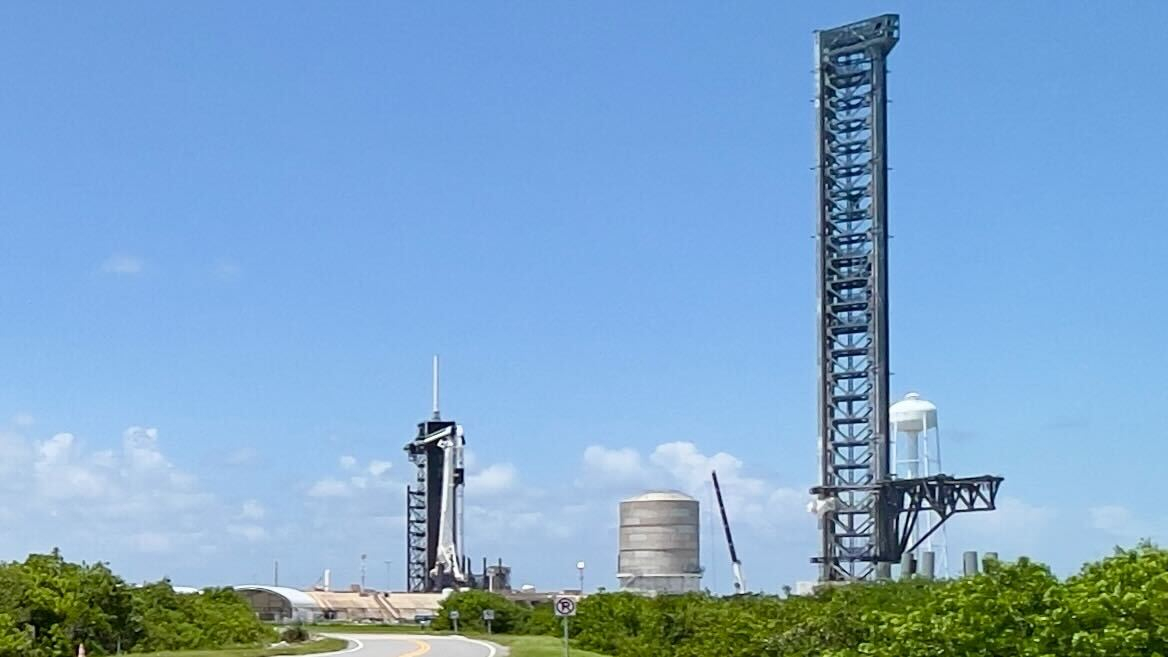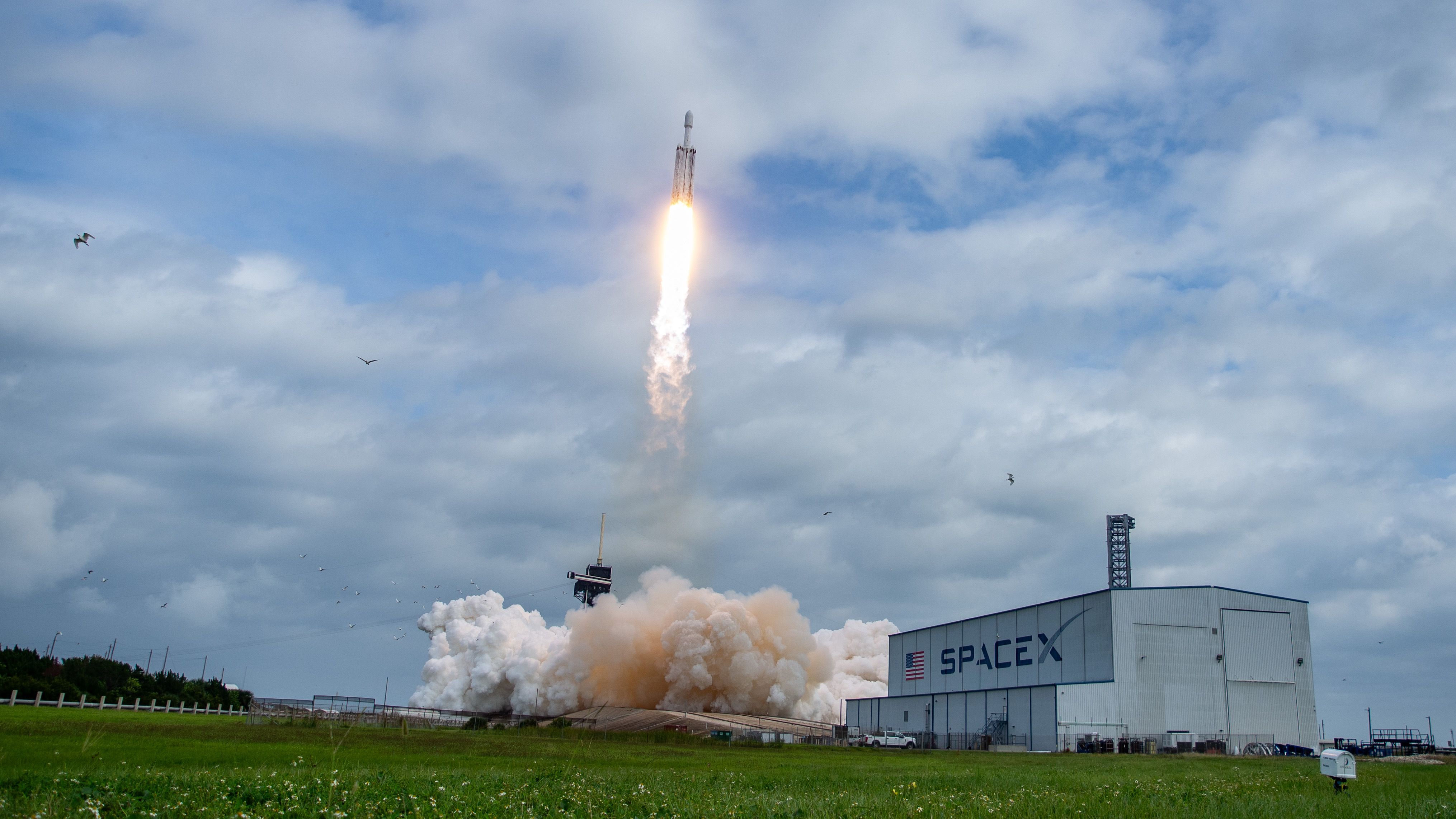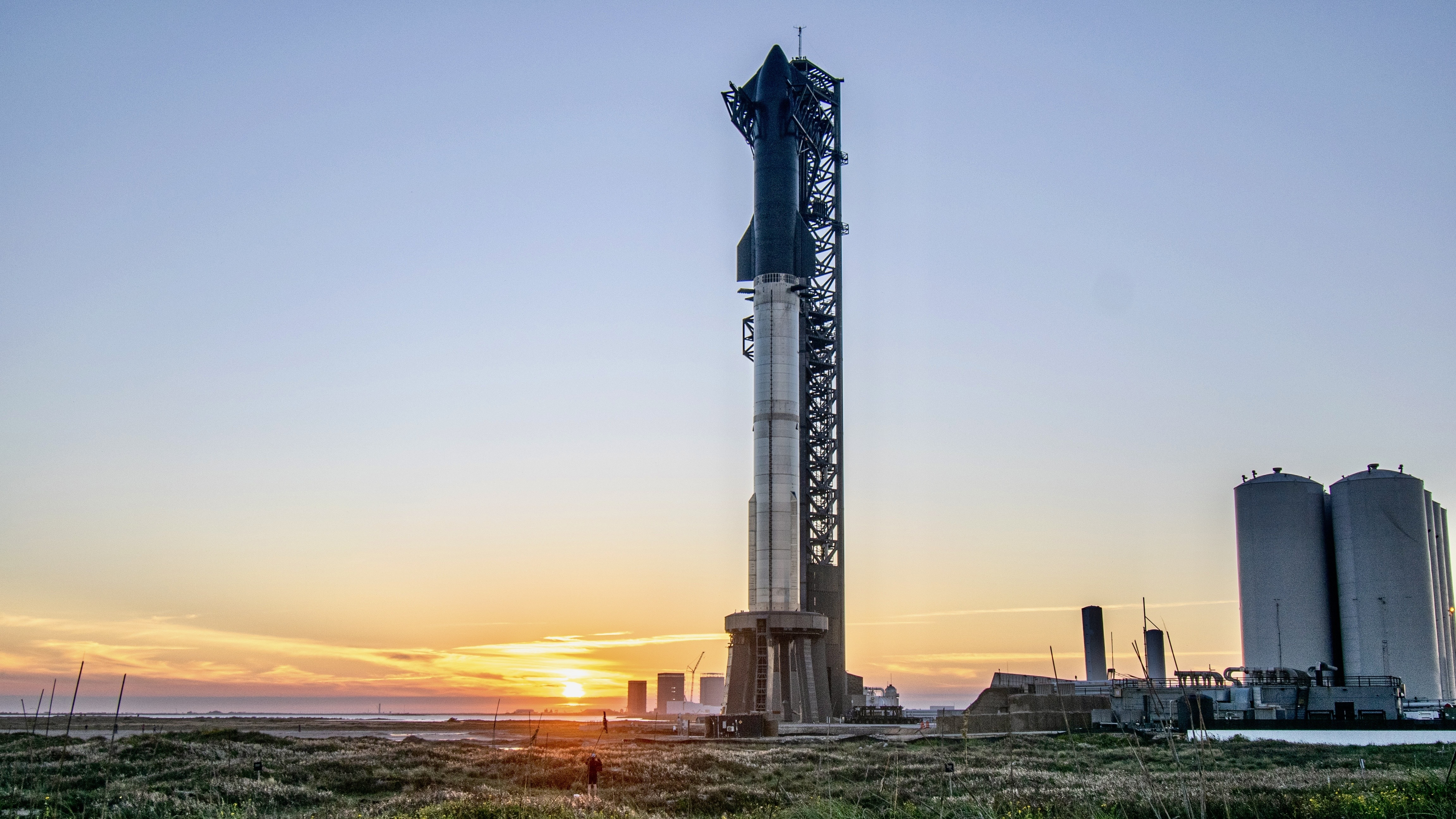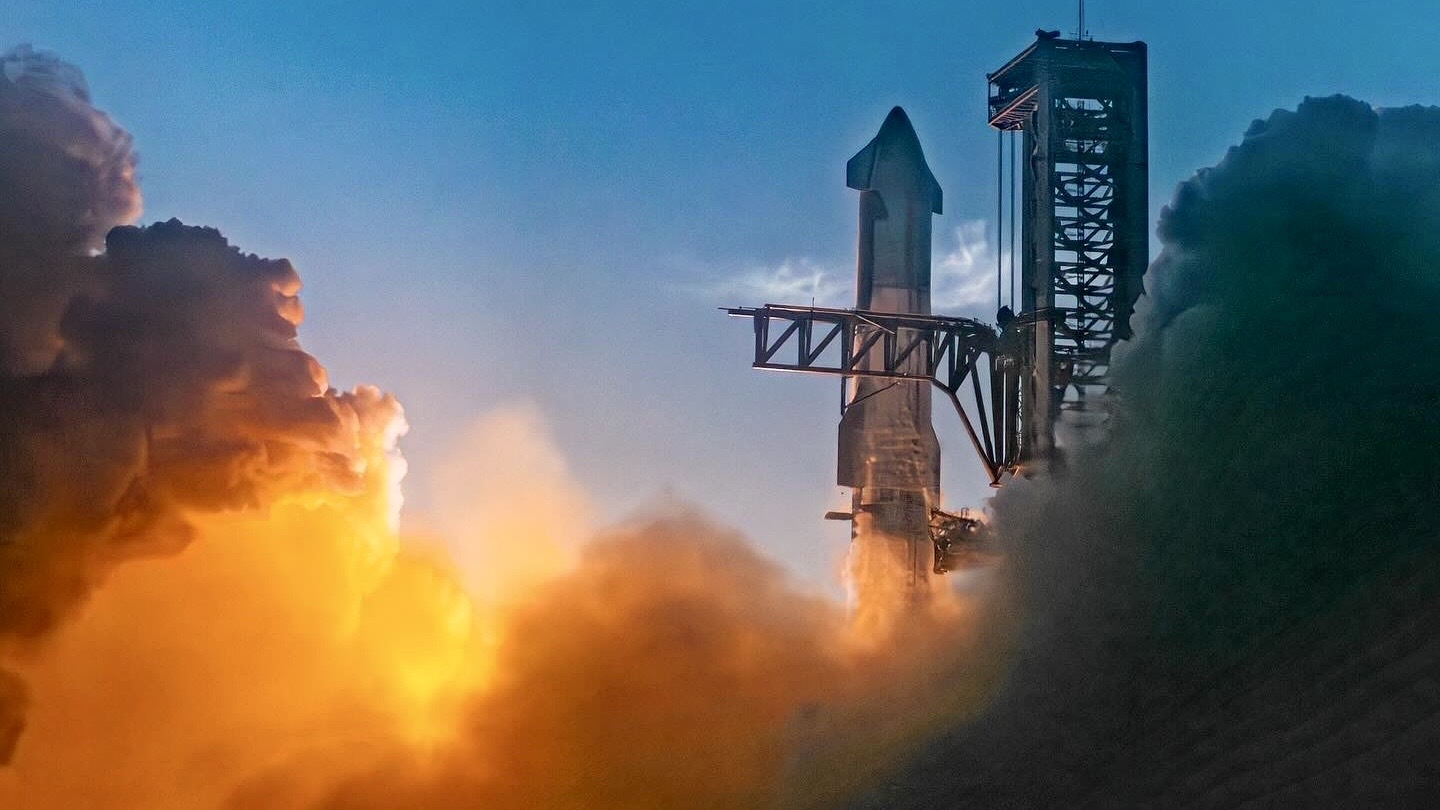SpaceX rivals challenge Starship launch license in Florida over environmental, safety concerns
Elon Musk's SpaceX hopes to launch up to 44 flights of Starship each year.

SpaceX's plans to launch its Starship–Super Heavy two-stage rocket 44 times per year from NASA's Kennedy Space Center in Florida have come under fire from its two main rivals: United Launch Alliance (ULA) and Jeff Bezos' Blue Origin.
The Starship vehicle is the world's largest rocket. Its two stages are SpaceX's Super Heavy booster rocket, and the upper stage spacecraft known somewhat confusingly as Starship or "Ship," on which a crew of up to 100 astronauts could someday fly.
Having undergone testing over the past few years, the design of the Starship/Super Heavy has undergone a number of revamps, with the latest resulting in a rocket that will stand up to 492 feet (150 meters) tall. To put this into context, the Saturn V was 363 feet (111 meters) tall, while the crewed version of NASA's new Space Launch System stands 322 feet 98 meters high. SpaceX's rocket is enormous, and the plan is for it to ferry astronauts to the moon and Mars.
Before SpaceX can get a license to commence launches from launchpad 39A at Kennedy Space Center (KSC) in Florida, an environmental impact statement must be provided that details what effects SpaceX's launches would have on the local environment and wildlife, as well as neighboring business and residents. This is done so by the Federal Aviation Administration (FAA), and it is currently in the consultation phase, where local businesses, organizations and members of the public can provide their say as to the pros and cons of SpaceX's plans. And, well, SpaceX's rivals haven't held back.
Blue Origin submitted a 3-page letter to the FAA, in which they ask for a cap to be put into place on the number of launches and landings, reducing the 44 planned launches to an unspecified amount "that has a minimal impact on the local environment, locally operating personnel and the local community," they wrote.
The Blue Origin objections also raise the point that the Starship–Super Heavy will hold "an unprecedented" 5,200 metric tons of liquid methane fuel, which is highly flammable and, should something go wrong, could create a devastating explosion on the launch pad. Blue Origin claims that the safety margins are so wide that they overlap with the launch pads, hangars and offices of several other companies, including Blue Origin themselves on launch pad 36, all of which are leased from the Kennedy Space Center.
ULA's criticisms hit even harder in a 22-page document that the company submitted as part of the consultation. They don't hold back, accusing SpaceX of producing their own environmental impact statement for their extravagantly named 'Starbase' at Boca Chica in Texas from where they have been testing Starship so far.
Breaking space news, the latest updates on rocket launches, skywatching events and more!
In the letter, ULA points out that SpaceX's environmental impact statement suggested that debris from any mishap on launch would only cover a square mile (2.5 sq km). In April 2023, during Starship's first test flight, debris was scattered instead over a 6-mile (9.6-km) radius, endangering the surrounding area and showing just how much SpaceX had underestimated the danger to their surroundings. The explosion led to environmental groups bringing a lawsuit against SpaceX and the FAA, which was eventually dismissed in court. At Kennedy, ULA's base is located only 3 miles (4.8 km) from SpaceX's launch pad 39A, which makes them understandably nervous.
"With the increased liftoff thrust planned for Starship, the debris from a similar launch failure could reach larger, populated areas surrounding KSC," said ULA, whose recommendation is that SpaceX launch Starship from Boca Chica instead.
"As the largest rocket in existence," wrote ULA, "an accident would inflict serious or even catastrophic damage, while normal launch operations would have a cumulative impact on structures, launch vehicle hardware and other critical launch support equipment."
On the other hand, Blue Origin suggested that the Government build new launchpads farther away from 39A for those companies such as themselves that could potentially be affected by SpaceX's Starship operations.
There was also much concern for the environment and local wildlife. To achieve the aim of 44 launches per year, there would need to be at least 3 or 4 launches per month, resulting in launchpad 39A being in use year-round. The Merritt Island Wildlife Association (Merritt Island is the peninsula on which the Kennedy Space Center is found) pointed out that floodlights will be on almost all the time at 39A that will disrupt the natural rhythms of wildlife, for example by sending migrating birds astray.
Meanwhile, the Defenders of Wildlife organization in Florida point out that near Boca Chica, the eggs of nesting birds were cracked by falling granular debris resulting from Starship's previous test flights. Birds are known to nest near launch pad 39A, and more frequent launches would harm the bird population in the area. However, the Defenders of Wildlife do state their belief that using 39A is better than building brand-new launch sites on undeveloped ground near Kennedy Space Center, as proposed by Blue Origin, which would also have a great environmental impact.
A wide-ranging New York Times investigation published June 8 details the environmental damage SpaceX's operations at Boca Chica have caused, noting that the damage has sparked a debate "over how to balance technological and economic progress against protections of delicate ecosystems and local communities." While FAA leadership is aware of the environmental issues Starship is causing, the agency has also stressed that the vehicle is vital for America's space program.
"Blowing debris into state parks or national land is not what we prescribed, but the bottom line is no one got hurt, no one got injured," The FAA's Associate Administrator for Commercial Space Transportation Kelvin B. Coleman told the New York Times. "We certainly don't want people to feel like they're bulldozed. But it's a really important operation that SpaceX is conducting down there. It is really important to our civilian space program."
It's not just wildlife that could be affected by Starship. SpaceX's water deluge system sprays a million gallons of water onto the pad during launch to protect it from damage during launch by absorbing much of the heat. While much of this water is vaporized, the rest runs off into collection ponds around the launch site. ULA questions whether and how this water will be treated for any toxic or otherwise hazardous chemicals in it, and what will prevent it from leaking out into the water supply at large.
SpaceX also has their eye on a second launch pad, having inquired about use of launch complex 37 from 2026 onwards on the neighboring Cape Canaveral Space Force Station. The U.S. Air Force is conducting its own environmental study of this proposal before granting permission.
ULA also questions SpaceX's decision to stop using offshore drone ships to land the Super Heavy booster on, and to instead land them back on 39A, which they say "shifts the risks of a system failure onto the communities, businesses, and environment that surround KSC."
All three companies are competing for the same NASA contracts, and some observers might see these complaints as sour grapes from SpaceX's rivals who are struggling to keep up with them. SpaceX's Elon Musk responded in a seemingly mocking fashion to Blue Origin's complaint on social media, posting "Sue Origin" on X (the social media company he owns) in the days following the company's letter.
However, whatever the motivations behind the complaints, many of them relating to safety and environmental impact do seem pertinent. Even NASA have misgivings; space agency officials have previously stated that an incident at the launch pad could effectively cut NASA off from their only means of reaching the International Space Station, which would leave astronauts stranded.
Both Blue Origin's and ULA's objections to Starship operations at KSC come down to the two companies believing that the rocket is too untested, too dangerous and too disruptive to fit into the ecosystem of the other users of the Kennedy Space Center.
However, it will be up to the FAA to decide whether such concerns are valid, and whether they are enough to prevent Elon Musk and SpaceX from fulfilling their Starship dreams.

Keith Cooper is a freelance science journalist and editor in the United Kingdom, and has a degree in physics and astrophysics from the University of Manchester. He's the author of "The Contact Paradox: Challenging Our Assumptions in the Search for Extraterrestrial Intelligence" (Bloomsbury Sigma, 2020) and has written articles on astronomy, space, physics and astrobiology for a multitude of magazines and websites.



